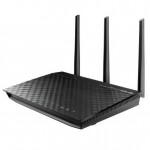Michael Guerriero of Brands Gone Wild Offers Tips on Systems for Retail Inventory Management
Effective retail inventory management hinges on the synergy between your workforce, your operational procedures, and the technological tools you’ve chosen to employ. In the retail landscape, many new businesses fail due to subpar inventory management. The culprit is frequently an inability to strike a workable balance between order quantities, storage duration and profit margins.
This is where your choice of systems for inventory management can save you.
What comprises retail inventory costs?
Retail inventory costs can be categorized as follows:
Ordering costs: These are the expenses associated with procuring inventory, including vendor charges, inspections, and shipping fees.
Shortage costs: These are the expenses that arise when a product becomes unavailable, including expedited shipping, as well as non-monetary costs such as diminished customer satisfaction.
Carrying costs: This is the cumulative expense incurred by retaining inventory – often compared to the actual value of the held products.
“The ideal ratio is to carry 20 to 30 percent of the inventory’s value, although this average may vary across industries,” says Michael Guerriero, a Toronto-based business executive.
Guerriero possesses a talent for enhancing business operations. He’s spent years assisting companies with efficiencies in inventory management, including overseeing wholesale operations, scrutinizing logistics, and managing day-to-day business activities.
Michael Guerriero is currently employing these retail management lessons at Brands Gone Wild, a retail company working with a whole community of Canadian wholesale buyers and sellers.
“Having a proper system in place can save you so many headaches, so it’s worth the effort in the long run,” says Guerriero. “If you aren’t monitoring your operations properly, you’re going to end up stocking out or purchasing too much. It’s inevitable. You should employ the best tracking and purchasing tools you can afford.”
Retail inventory management assumes a pivotal role in cost containment. The quality of a good system lies in strategizing methods to regulate your stock, ensuring optimal inventory levels to meet customer demand without getting into excess holding durations.
Best practices for retail inventory management
So, how can you effectively manage inventory at your retail outlet? Here are five best practices recommended by Michael Guerriero:
Get some software: “First of all, if you haven’t yet, it’s time to implement software for inventory management,” says Guerriero. “A lot of people want to stick with a manual method, but it’s just not going let you scale and survive like you need to these days.”
Guerriero suggests using software that will automate the tracking process by integrating with your point-of-sale (POS) system and providing real-time visibility into your inventory counts.
Set up stock alerts: Your system should allow you to set up stock alerts, so you can pre-empt any product shortages. You can specify minimum inventory levels for each product, and you’ll receive alerts when those items are approaching or have gone below those thresholds.
Select suppliers judiciously: Your choice of suppliers is pivotal in your retail inventory management strategy. When evaluating potential suppliers, consider factors such as price, product quality, reputation, and efficiency. Establish clear expectations and cultivate strong relationships to ensure your vendors align with your goals and contribute to your success.
Implement SKU management practices: To avoid overburdening your store with an excessive number of products, adopt a SKU-based inventory management system. Analyze the carrying costs associated with each “stock keeping unit” (SKU) item to identify which products best serve your business. If certain SKUs aren’t delivering favorable financial results, consider discontinuing them.
Optimize your order size: Strategic bulk ordering from vendors reduces purchasing and shipping costs. Utilize data analytics tools within your POS system to gain insights into consumer buying patterns, enabling you to generate purchase orders that align with actual demand.
“By following these steps, you can streamline your retail inventory management, maintain precise control over your stock supply, and ultimately save both time and money,” says Guerriero.
Cover Image by Freepik








![Top Cities for Working Remotely in 2018 [Infographic]](https://technofaq.org/wp-content/uploads/2018/01/TopCitiesforWorkingRemotelyin2018-150x150.png)







